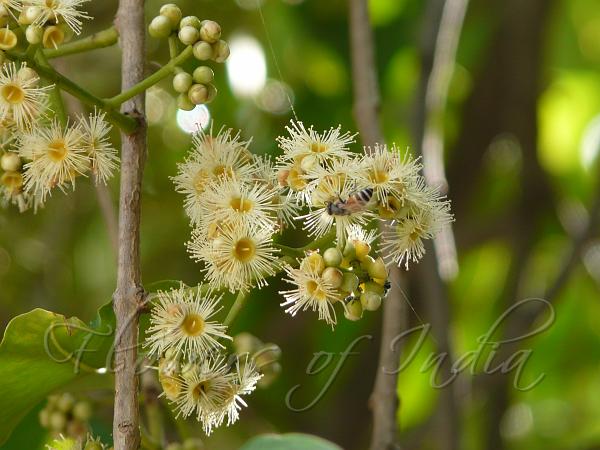|
| Jamun |
|

|

| File size | 2378079 |
| Original date | 5/26/08 2:41 PM |
| Resolution | 2560 x 1920 |
| Flash | Flash did not fire, auto |
| Focal length | 82.8mm |
| Exposure time | 1/100s |
| Aperture | 4.2 |
| Focus Distance | |
| Metering Mode | Multi-segment |
| Camera make | Panasonic |
| Camera model | DMC-FZ18 |
| Sensor type | OneChipColorArea |
|
|
|
Photo: |
Botanical name: Syzygium cumini Family: Myrtaceae (Bottlebrush family)
The evergreen jamun plant is originally from Indonesia and India.
Indian mythology describes the Indian subcontinent as an island, 'situated in
the centre of the world', called Jambudweep. Because of a majority of Jamun
(black berry) trees, this island was named as Jambudweep. An evergreen
tropical tree, 50 to 100 ft. tall, with oblong opposite leaves that are
smooth, glossy and having a terpentine smell. Jamun has fragrant white flowers
in branched clusters at stem tips and purplish-black oval edible berries. The
leaves are antibacterial, and are used for strengthning the teeth and gums.
The fruit and seeds are sweet, acrid, sour, tonic, and cooling, and are used
in diabities, diarrhoea and ringworm. The bark is astringent, sweet sour,
diuretic, digestive and anthelmintic.
| Identification credit: Radhika Vathsan | Photographed in Hauz Rani City Forest, Delhi. |
• Is this flower misidentified? If yes,